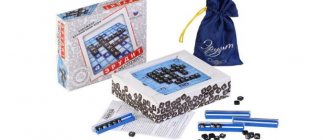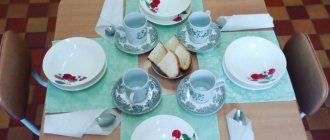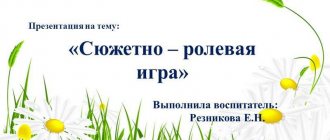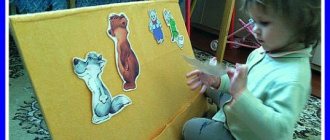Project “Local history through a fairy tale”
Project characteristics.
Preschool age is a bright, unique page in the life of every person. It is during this period that the process of socialization begins, the child’s connection with the leading spheres of existence is established: the world of people, nature, the objective world, and the foundation of health is laid.
Currently, it is necessary in preschool institutions to introduce children to the culture of their people as much as possible and to develop their national identity. A child must, first of all, take root in his own land and culture, get acquainted with his original, and then master someone else’s.
It is known that if a small child does not know his history, does not see the beauty of his native land, does not hear positive information about his country, he will not develop a value-based attitude towards his Motherland, he will not be able to fall in love, which means that in the future he will not be able to defend its interests, protect.
A range of social, moral, and spiritual values cannot be imposed on a child. Their meaning and significance is determined and developed through his own efforts, in the process of direct acquaintance and familiarization with the environment in which he lives.
Problem: Children’s interest in their place of residence is quite understandable and natural, but the information children draw from the world around them is rather scarce and scattered. “A tree without roots dies,” says popular wisdom. Therefore, the process of getting to know your native village and region should be varied and regular, without long pauses between events and classes.
the relevance of the topic under consideration primarily with the fact that currently the social development of the country requires teachers of kindergartens and schools to educate socially active, independent, creative individuals adapted to the conditions of modern life.
Topic: Local history through a fairy tale.
Project type : informational and creative
Aimed at developing imagination, fantasy and coherent speech.
By nature of content : includes child and family.
By the nature of the child’s participation in the project : a participant from the inception of the idea to the receipt of the result.
By the nature of contacts : carried out within one group.
By number of participants : frontal.
Duration : long-term.
Project goal : Comprehensive study of the native village of Maksatikh and the Tver region, Russia. Revival of family traditions.
Project objectives : to form children’s ideas about their family, their kindergarten, and their village.
— Introduce the life of the Russian people, fairy tales, and folk holidays.
— To give an idea of the size of our region and its natural resources. Arouse interest in the life of your native land.
— Introduce the history and modernity of the village of Maksatikha.
— Contribute to the formation, development and strengthening of not only the children's team, but also the family.
— To promote the development of personal qualities of preschoolers through fairy tales.
Preliminary work : collecting photographs about the village and surrounding area, Russian folk costume, reading fiction, Pirate and Bear dolls.
Object: joint activities of children, teachers and parents.
Subject of innovation : revival of family traditions and values through a fairy tale.
Hypothesis : local history education should be comprehensive, permeate all types of activities of preschoolers, carried out in everyday life, in special classes and various holidays, entertainment and events. I suppose that by writing fairy tales about my native land, first together with my parents and teachers, and then independently and subsequently releasing my own book of fairy tales. We will thereby revive family traditions, both family and society. Children then write fairy tales in elementary school. And these fairy tales are published. Then in middle and high school. In this way we create continuity between the kindergarten and the school. This may include colleges and technical schools, institutes and universities.
Challenges of innovation:
1. Develop and provide methodological support for the implementation of the project “Local history through a fairy tale.”
2. To develop cognitive activity and creative abilities in preschoolers using material that is close, accessible and significant for education and development through fairy tales.
3. Increase and expand pedagogical knowledge in this area.
4. To unite teachers, children and parents with an exciting activity - recording unique fairy tales.
5. Education of the foundations of the spiritual and moral development of the child’s personality.
Implementation period : 2012-2013 academic year.
Stages of project activities.
Stage 1 – preparatory.
Tasks
1. Study the legal framework for innovative activities in the education system.
2. Introduce parents to the importance of project activities in kindergarten.
3. Select methods for implementing project activities.
4. Develop a monitoring program.
5. Establish connections with society.
Predicted result of stage 1.
Ensuring motivational, informational and organizational readiness of project participants.
Identifying ways to achieve results: surveys, interviews, observations.
Stage 2 – practical.
Second stage tasks:
1. Organize targeted work on local history topics in the 2nd junior group of MBDOU “Kindergarten No. 4”.
2. Involve parents in cooperation and implementation of the program at this stage.
3. Determine the degree of satisfaction of children and parents with the educational process and its results.
4. Establish interaction with society.
Work plan for the 2012-2013 academic year.
| Main content of the activity | Deadlines | Responsible |
| Parent meeting. Topic: “Introduction to the kindergarten-home of joy program” Group Room Tour Folder “Fairy tale in a child’s life” Diagnostics | September | Educators Educators Educators |
| Introductory tour of children around the kindergarten Consultation for parents “Project activities in kindergarten” Entertainment “Autumn Gatherings” | October | Educators Educators Educators |
| Questioning of parents “Local history education at home and in preschool educational institutions” Organizing recordings of fairy tales by parents and educators | November | Educators Educators, parents and children. |
| Joint exhibition of crafts “Make a Christmas tree toy” Folder – moving “The meaning of speech for children of the 2nd ml. group” New Year holiday" | December | Teachers, parents, children Educators Educators |
| Joint activity "Samovar" Entertainment "Hello Fairy Tale" Parents' living room "Books in children's lives" | January | Educators Educators Educators |
| Lesson “Masha doll’s birthday” Teamwork by February 23 Exhibition "Portrait of the Pope" | February | Educators Teachers, children Parents, children |
| Excursion to the kitchen in the garden. Making postcards for March 8 Holiday "Mother's Day" | March | Educators Teachers, children Educators |
| Excursion to the laundry Literary evening “Tales of Aunt Irina” | April | Educators Educators |
| Diagnostics Questionnaire analysis Compiling the album “My Kindergarten” Parent meeting “Speech and Thinking” | May | Educators Educators Educators Educators |
Forms of work on the project
| With parents | With kids | With employees d/s |
| - survey. - parents' living room. - meetings with kindergarten staff. — participation in the life of d/s. -recommendations: visiting the museum | - integrated classes. - games. - holidays. - excursions. - observations. - productive activity. — meetings with graduates. — meetings with former kindergarten employees. | — theoretical and creative reports. - self-education. - selection of literature. — long-term planning. - production of manuals. - visiting of museum. - joint activities with parents. — search for graduates and former employees of the kindergarten. |
Project implementation
| Activities | Forms and methods of work |
| 1. Gaming | 1. Didactic games: - “Get your daughter ready for kindergarten.” - “Whose house?” - “Which is for the kitchen, which is for the bedroom?” - “From what fairy tale? 2. Plot-role-playing games: - “Holiday in kindergarten.” - “Who works in kindergarten?” |
| 2. Cognitive | — Tour of the kindergarten. — View illustrations, photographs. — Meetings with kindergarten staff. — Cognitive activities: the surrounding world, the history of the village and kindergarten, life, traditions and customs, symbols of the area, kindergarten and group. |
| 3. Speech development | - Reading stories and poems, songs, nursery rhymes, fairy tales. — Stories from educators, graduates, veterans about kindergarten. - Compilation of fairy tales and stories. |
| 4. Productive | — Creation of albums “My kindergarten”. — Making gifts, invitation cards and cards. — Exhibition of family drawings. |
Predicted result.
1. Creation of favorable conditions for a comprehensive and holistic pedagogical process, implementation of plans and activities of this stage.
2. Updating the pedagogical process as a result of the implementation of the project “Local history through a fairy tale.” Development of a long-term plan, inclusion of new forms and methods in working with children.
3. Monitoring the development of children.
Ways to identify achievements.
Questioning, monitoring.
Presentation of the results : a long-term work plan for the teacher, a summary analysis of the results of a parent survey, diagnostics of children, results of monitoring the quality of the implementation of the innovative project “Local history through a fairy tale.”
Stage 3 – evaluation.
Tasks:
1. Collection of analytical material (questionnaires, diagnostics, fairy tales)
2. Documentation of the teacher’s work experience.
3. Updating the pedagogical process as a result of using methodological developments on the topic of innovation.
4. Improving the level of teacher qualifications.
Predicted result.
Creating a unified educational environment in kindergarten and at home.
Establishing an emotionally positive climate in the group and cooperation between the child, teacher and parents, ensuring harmony in the relationship between the preschool educational institution and the family.
This project activity intensified my work to acquire new knowledge and skills. It has led to positive changes in a number of areas:
— integration of children's activities;
— broadening one’s horizons;
— children’s mastery of the socio-historical experience of previous generations through fairy tales;
— increase in forms and methods of pedagogical activity.
The main result of the project “Local history through fairy tales” should be a book of their own unique fairy tales for every graduate of a preschool educational institution, school, college, or institute.
Slogan: “Fairy tales, family traditions, strong Russia!”
Graduate model
A graduate of a preschool educational institution who went through the implementation of an innovative project:
- understands the values of nature and history of his native village and region; an active citizen of his small homeland who knows his genetic roots; knows and loves his village, and the region in which he lives, who has an interest in what directly surrounds him (from nature to the smallest creation of human hands), who loves and wants to preserve and increase all this;
- knows how to respond emotionally to works of art and music and express one’s attitude towards them in feelings and mood;
- has a rich vocabulary, can use speech fluently;
- physically and psychologically healthy.
Literary sources.
1. Krylova “Garden - a house of joy.”
2. Antonov Yu.E. Levina L.V. “How to teach children to love their homeland”
3. Magazine “Child in kindergarten” No. 1 2005.
4. Knyazeva O.L. Makhaneva N. V. “Introducing children to Russian folk art”
5. Nikolaeva S.R. Katysheva I.V. "People's calendar"
6. Kasatkina E.I. "Folk games in the kindergarten"
7. Belaya K.Yu. "Innovative activities in preschool educational institutions"
8. Magazine “Preschool Education Management” No. 4 2008 “Projects in interaction with parents.”
19. Borozdina O.S. “Introducing children to the national cultural tradition as a creative process.”
QUESTIONNAIRE for parents “Local history education in the family and preschool educational institutions”
Dear parents!
We invite you to answer the following questions:
1. What meaning do you give to the concept of “local history education”? Do you consider it necessary and possible to begin local history education from preschool childhood? Why?___________________________________________
2. Do you know the cultural and historical heritage of the village or region well enough to ensure the child’s integration into the regional culture? _______________________________________________________________________
3. In what ways do you increase the child’s level of competence in matters of the culture and history of his native village or region?
_______________________________________________________________________
4. Do you consider it necessary to introduce a preschool child to the culture of his native land? What ways could you suggest to solve this problem?____________________________________________________________
5. At what age do you think it is necessary to develop in children an interest in the natural and cultural heritage of their native village or region?________________________________________________________________________________
6. Do you know what and how to tell your child about your native village?
_______________________________________________________________________
7. What literature, in your opinion, can be used to introduce children to their native village and its history? Name known sources.
_______________________________________________________________________
8. What do you think parents can and should do to educate their children in local history?
_______________________________________________________________________
Consultation “Local history in the preschool education system is the first stage of child socialization”
Irina Loktionova
Consultation “Local history in the preschool education system is the first stage of child socialization”
“Patriotism does not mean only love for one’s Motherland.
It's much more than that. This is the consciousness of one’s inalienability from the Motherland and an inalienable experience
together with her, her happy and her unhappy days.”
Alexey Nikolaevich Tolstoy
Local history education of preschool children is considered as an integral part of the basic culture of the preschooler's . The local history activities of a modern kindergarten teacher have enormous socio-political and cultural significance; plays an important role in the educational process .
The main goal of local history is to educate a moral citizen who loves and knows his land.
Modern education requires teachers to educate socially active , independent, creative individuals, socialized , adapted to the conditions of modern life. It is local history activities that create optimal conditions for a child’s self-development. If you observe systematicity and continuity in your organization, local history education will give effective results and will allow you to organize local history work in a certain planned system throughout the entire educational process .
history in kindergarten is an important area of work in terms of raising a comprehensively developed person. education is increasingly increasing . One of the moral norms developed by the people over centuries of history is love for their native land. Local history activities unite teams and strengthen friendship on the basis of common deeds and plans.
It is very clear that the introduction of local history educational activities has a positive impact on the depth of knowledge and overall development of preschool children .
The social and personal development of a preschooler is a multifaceted process that involves the appropriation of cultural and moral values of society, the formation of personal qualities that determine relationships with other children and people, and the development of self-awareness. One of the factors in the socialization of preschoolers is local history work , during which the child is faced with reality, specific life situations associated with overcoming difficulties, with the manifestation of volitional efforts, independent decisions, coordinated actions, which contributes to the acquisition of moral experience.
The objectives of social development are :
-development of social emotions , development of a sense of patriotism - love for the native land, native country, affection, devotion and responsibility towards the people inhabiting it;
- children's assimilation of moral values;
- establishing interpersonal relationships as the moral basis of social behavior ;
- education of ethical and valuable ways of communication and cooperation;
-developing interest in self-knowledge and instilling self-respect in the child .
The acquisition by students of information about the peculiarities of the local society , the development of the criticality of their judgments, the ability to navigate the environment, the desire to participate in its transformation - these and other educational values are embedded in local history , which allows us to consider it as an important system-value approach in the process of socialization of a developing personality. Socialization of a personality is the process of its formation in the specific living conditions of society social experience is assimilated , i.e., the norms, rules and values of society are transformed into personal values that determine the model human behavior.This transformation can be either spontaneous or purposeful.
The development of a growing person as a socially responsible and active person is unthinkable without awareness of his cultural heritage.
The interaction of an individual with the environment is one of the most pressing problems of our time, because the success of material production, the creation of spiritual values, and the formation of new social relations largely depend on the basis on which relations with the environment are formed.
The experience of recent decades shows that interest in former patriotic ideals and traditions has decreased significantly, while new ideals are still being formed. A certain vacuum has formed in the emotional and value-based attitude towards one’s native places, one’s native country, which needs to be filled with values and traditions of regional significance.
Local history work in its most general form can be represented as an activity that includes the following components:
1. Intensive (knowledge about the native land )
.
2. Operational (various actions, using skills, techniques)
.
3. Effective (new knowledge, new special experience, ideas, views, needs and personality traits).
The content component involves clarifying the subject of local history work and its purpose. Preschool local history is an activity to familiarize children with the historical and cultural heritage of their region, with natural, industrial and other features. It involves a comprehensive study of a certain territory for educational purposes .
The operational component of local history work helps answer the question: “With the help of what techniques, methods and forms can one get to know one’s native land?”
The effective component of local history work is expressed primarily in the fact that children, under the guidance of adults, acquire various knowledge from the life of their native land in the process of studying it.
In the process of learning and transforming their native land, the most important patriotic feeling is affirmed in children - responsibility for the fate of their small and large Motherland.
Functions of forming a system of value relations
1. Educational function. The main objects of knowledge in the process of local history work are people, culture, work and nature.
By equipping the younger generation with knowledge about the region , we form the readiness and desire of children to be useful to their people, and as they grow older, to contribute to improving the life of their native land.
2. A unique function of local history work is unmasking. Its essence lies in the fact that in the process of local history work, the properties of objects and phenomena are revealed, the existence of which was not assumed ( the “mask”
from a cognized object, its true properties are revealed).
3. Commenting function. The assimilation of knowledge about any object in the process of local history work is accompanied by its moral assessment, that is, approval or condemnation of various phenomena of social reality and people’s actions, depending on the moral significance they have.
The main carrier of meaning is the word
4. Orienting function. Local history work , in the process of which the surrounding objects and objects are learned and experienced, and also receive appropriate moral assessments, regulates children’s attitudes towards people, objects in the environment, and teaches them how to navigate it correctly. Emotional perception of a fact , phenomenon or object can enhance or weaken its significance for the subject and encourage a certain action.
5. Stimulating function. Local history work , aimed at understanding the native land and associated with useful activities in one’s hometown or village, creates incentives for the development of the motivational sphere.
Stimuli, acting as an external phenomenon or circumstance, in the process of local history work can be both its content and individual components of the organization of activity.
preschool children’s knowledge about the participation of their fellow countrymen in the Great Patriotic War and admiration for their courage stimulate children’s activities to help disabled war veterans; perceive this work as a duty to the older generation. However, children cannot yet understand the needs of society with such depth that they perceive them as their own and directly encourage them to act. The teacher is faced with the task of ensuring the presence of those motives that would become direct incentives for activity. Such incentives are the emotions of children arising in the process of “discovering their region”
, causing a sense of surprise at how rich he is and how little they know about him.
The discovery of new properties, aspects of a familiar object (here the educational , unmasking and commentary functions come into force) increases interest in the proposed activity.
The means of stimulating collective activity that local history work can be games, competitions, the desire of a preschooler to establish himself in a team, as well as interest in his native land and its objects on a substantive and practical basis: common territory, neighborhood, existing experience of communicating with the people of the region and others that the teacher can use to “set the stage”
the process of studying the native land and participating in its transformation.
to the fore the ability of students to comprehend what is happening, to see life in its constant development, renewal, and thereby enables the individual in the process of socialization to determine their trajectory of self-development.
The teacher is faced with the task of ensuring the presence of such motives that would become direct incentives for knowledge. Such incentives are the emotions of children arising in the process of “discovering their region”
, causing a sense of surprise at how rich he is and how little they know about him.
In the process of working with a child, it is important for a teacher to ensure the translation of external requirements, reflecting , standards or values of behavior society the preschooler’s . He informs children about the uniqueness of the environment, selects in this environment the objects that are most significant for instilling in preschoolers independent thinking, the ability to justify the choice of their behavior, and, in general, using the characteristics of society as a resource for the formation of a system of moral values of the growing individual.
The effective component of local history work is expressed primarily in the fact that preschoolers, under the guidance of a teacher, acquire various knowledge from the life of their native land in the process of studying it.
“ Local history should teach every child to look at their surroundings not through the eyes of a consumer, but through the eyes of a creator, activist, active participant in transformation, improvement, rationalization, decoration.” In preschool local history , not only the study of the diverse life of the region and its role for the whole society begins, but also the opportunity to transition from “ statements of facts and expressions of emotions to useful activity.” In the process of learning and transforming their native land, the most important patriotic feelings are affirmed in children - responsibility for the fate of their small and large Motherland, as well as spirituality, morality, and citizenship.
to the fore the ability of students to comprehend what is happening, to see life in its constant development, renewal, and thereby enables the individual, in the process of socialization , to determine his trajectory of self-development in the future.
Preschool age is the most important period in the formation of personality, when the prerequisites for patriotic and civic qualities are laid, and children’s ideas about man, society and culture develop. preschool children ; it is at this age that a preschooler perceives the reality around him emotionally, acquiring a sense of attachment to the place where he was born and lives, a sense of admiration for the culture of his people, and pride in his country.
Summary of educational activities for familiarization with the outside world in the 2nd junior group “Our Motherland”
Goal: to develop moral and patriotic feelings in children of primary preschool age.
Tasks:
1. Summarize children’s knowledge about the flora and fauna of their native land
2. Fix the name “Russia”
3. Consolidate knowledge about the flag.
4. Develop dialogical speech, memory, thinking.
5. Develop fine motor skills of the hands.
6. Enrich your vocabulary with new words.
GCD move:
Educator: Guys, there are many different countries on earth. What is the name of the country we live in?
Children: Russia.
Educator: I suggest you go on a trip around Russia, around our Motherland by train. Do you love to travel?
(Children's answers).
(Children sit on chairs standing one after another.)
Educator: Let's go. Bon Voyage!
The locomotive shouts: “doo-doo!”
I'm walking, walking, walking.
And the carriages knock, and the carriages say:
“Well, well, well, well, well, well”
Educator: We stopped. Our station is called "Lesnaya". What trees grow in the forests of our Motherland? (the teacher shows pictures of trees)
- children's answers.
Educator: What birds live in Russia? (pictures of birds)
(Children's answers).
Educator: What animals live in the forests of our Motherland? (pictures of animals)
(Children's answers).
Educator: Well done. Let's move on.
The locomotive shouts: “doo-doo!”
I'm walking, walking, walking.
And the carriages knock, and the carriages say:
“Well, well, well, well, well, well”
Educator: We stopped. The station is called "Fairytale". Name Russian folk tales (illustrations for the fairy tales “Turnip”, “Kolobok”, “Ryaba Hen”, “Swan Geese”).
(Children's answers).
Educator: Well done, guys. Let's move on.
The locomotive shouts: “doo-doo!”
I'm walking, walking, walking.
And the carriages knock, and the carriages say:
“Well, well, well, well, well, well”
Educator: The next station is “Main”. Guys, we know that our homeland is Russia. And there is also such a word: “small Motherland”. What is it? This is a small piece of our huge country, this is a city, a street, a house and our kindergarten that you go to. Name the main city of our small Motherland.
Children: Krasnodar.
Educator: Guys, each country has its own flag. Let's remember what colors our flag has.
(Children's answers).
Educator: Now you and I will rest a little, and everyone will make their own flag. There are colored strips on the table, and we will glue them in the right order onto the paper.
Physical education minute.
Educator: Well done, guys. The journey through our Motherland has ended. What did we talk about today?
(Children's answers).
Educator : Listen to the poem “Our Motherland”
Great land
Beloved land
Where we were born and live,
We are the bright homeland,
We are the dear Motherland,
We call it our Motherland.
You guys are all great, you answered the questions well. This concludes our lesson with you, thank you all.






